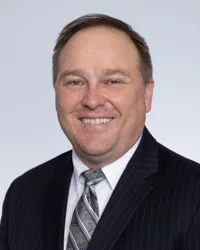Vocational rehabilitation experts may no longer simply ignore physicians’ valid medical apportionment findings and substitute it with “vocational apportionment,” the Workers’ Compensation Appeals Board ruled in a new en banc decision.
The WCAB determined in the case of Nunes v. DMV, 6/22/23, that Labor Code section 4663 requires reporting physicians to make medical apportionment decisions, and does not allow for separate “vocational apportionment” that fails to take medical apportionment into consideration. The decision, which is binding authority, was signed off by six commissioners in a unanimous decision.
The ruling impacts a smaller subset of high value cases which usually feature the following fact pattern:
- A medical expert, often a QME or AME, finds medical apportionment of permanent disability (PD) for the existing case, to a prior date of injury. This tends to reduce the value of the PD on the existing case.
- This apportionment reduces the value of the award and in some cases, is the difference between an applicant being permanently totally disabled versus being permanent partially disabled.
- An applicant is unhappy with the existing PD rating, and wants a much higher award. Therefore, they hire a vocational rehabilitation expert to argue that the existing PD rating is inadequate. Often this expert will say applicant is entitled to a finding of permanent total disability because of the inability to compete in the labor market.
- The applicant’s vocational rehabilitation expert issues a report that disregards the physicians’ medical apportionment findings, and says that the current work injury caused the applicant to be permanently totally disabled because they are unable to compete in the open labor market. In other words, the date of injury at issue in the case was the sole cause of the loss of applicant’s total loss of earning capacity, according to the applicant’s vocational rehabilitation expert. The applicant’s expert substitutes the physicians’ medical apportionment to a prior date of injury with a differing opinion, which is referred to as “vocational apportionment.”
- Defendant will usually have a vocational rehabilitation expert that disagrees with applicant’s vocational rehabilitation expert. The defendant’s vocational rehabilitation expert often respects the medical apportionment found by the physician.
In summary, this decision says that there is no statutory provision for “vocational apportionment,” and that vocational rehabilitation experts must “carefully consider” apportionment factors. They cannot rely on an inaccurate history, or facts that are not germane to the case.
What the WCAB was referring to is that some vocational rehabilitation experts were intentionally calling for the WCAB to ignore prior awards of permanent disability, which was the case in Nunes.
To be clear, vocational experts may still rebut the permanent disability rating schedule. However, they cannot rely on false medical histories, or by simply ignoring prior awards or prior dates of injury that a physician validly apportioned to. If a vocational rehabilitation expert is going to disagree with medical apportionment given by a physician, they had better have a strong, fact-based argument for doing so that still takes the medical apportionment into consideration.
NOT THE END OF THE STORY
Please keep in mind that the applicant’s attorney may choose to ask the 5th District Court of Appeal to reverse the WCAB’s en banc decision. It is unknown at this time if they will dispute the en banc decision, but as of the date of publication, it is worth noting that there could be more to this story should the appellate court grant review.
CONCLUSION
This en banc decision does away with vocational rehabilitation experts substituting their own “vocational apportionment” for “medical apportionment” of PD with flimsy or inaccurate explanations. If a vocational rehabilitation expert is going to disagree with a physician’s medical apportionment decision, they must do so with a very detailed, accurate, and well-reasoned explanation that takes valid medical apportionment into consideration.
In cases where there are a) multiple body parts and/or conditions, and b) there is evidence of apportionment for only some of those body parts or conditions, we can expect applicants to ask vocational experts to drill down and specify whether the complete loss of feasibility is due to the conditions or body parts that do not have a basis for apportionment. For defendants, this will likely mean a greater need to have doctors explain how non-industrial factors contribute to any potential difficulties engaging in vocational retraining to rebut such efforts.
Got a question about workers’ compensation defense issues? Feel free to contact John P. Kamin or Louis A. Larres. Mr. Kamin is a workers’ compensation defense attorney and equity partner at Bradford & Barthel’s Woodland Hills location, where he monitors the recent legislative affairs as the firm’s Director of the Editorial Board. Mr. Kamin previously worked as a journalist for WorkCompCentral, where he reported on work-related injuries in all 50 states. Please feel free to contact John at jkamin@bradfordbarthel.com or at (818) 654-0411.
Louis A. Larres is a partner and area managing attorney at Bradford and Barthel’s Fresno office, and the director of the firm’s Appellate Division. Please feel free to contact Louis at llarres@bradfordbarthel.com or at (559) 221-6500.
Viewing this website does not form an attorney/client relationship between you and Bradford & Barthel, LLP or any of its attorneys. This website is for informational purposes only and does not contain legal advice. Please do not act or refrain from acting based on anything you read on this site. This document is not a substitute for legal advice and may not address every factual scenario. If you have a legal question, we encourage you to contact your favorite Bradford & Barthel, LLP attorney to discuss the legal issues applicable to your unique case. No website is entirely secure, so please be cautious with information provided through the contact form or email. Do not assume confidentiality exists in anything you send through this website or email, until an attorney/client relationship is formed.




